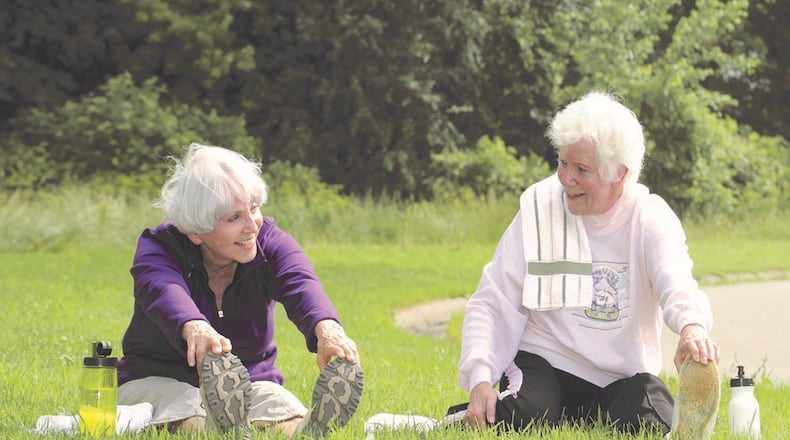The CDC reports that physical activity is generally safe for fit individuals who are 65 and older and have no existing conditions. Despite that, it’s best for any senior to consult his or her physician prior to beginning a new exercise regimen. Once doctors give seniors the go-ahead to begin a new workout routine, seniors can take the following steps to reduce their risk for injury.
- Warm up before working out. Seniors may think they don’t need to warm up before exercising because their workouts are not as high-intensity as they might have been when they were younger. But Harvard Medical School notes that warming up pumps nutrient-rich, oxygenated blood to the muscles and helps increase heart rate. The American Council on Exercise reports that warming up helps reduce workout-related injury risk by improving tissue elasticity. So prior to beginning a workout, regardless of how moderate- or low-intensity that regimen will be, seniors should warm up for five to 10 minutes.
- Start with a routine that’s commensurate with your abilities. Seniors excited by the prospect of working out must temper that excitement if they’re not accustomed to physical activity. Such individuals should consider working with a personal trainer. Personal trainers design exercise regimens based on each individual client’s fitness levels and goals. As clients make progress and their bodies become acclimated to routine physical activity, personal trainers can then tweak regimens to make them more challenging. Seniors can take on these responsibilities themselves, but are urged to begin slowly and gradually build up their exercise tolerance.
- Don’t skip strength training. Seniors may think lifting weights is for young people who want to look buff, but the AARP® notes that muscle-strengthening activities protect the joints, reducing seniors’ risk for injury as a result. The Department of Health & Human Services recommends seniors who have been cleared to exercise engage in strength training at least twice per week.
- Stretch after your workout. Harvard Medical School reports that efforts to cool down after a workout, including stretching, can prevent muscle cramps and dizziness a nd lengthen muscles throughout the body, which improves range of motion. Harvard Medical School recommends holding each stretch for 10 to 30 seconds, as the longer a stretch can be held the more flexible individuals’ muscles will be.
About the Author

